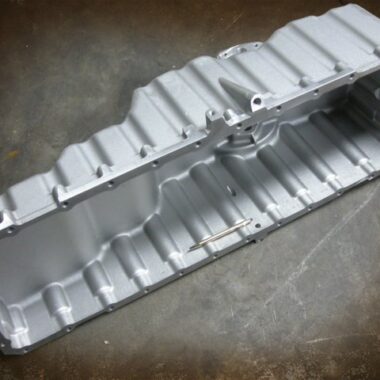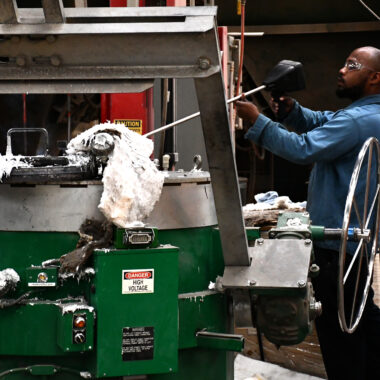Opening Excellence: Aluminum Casting Techniques & Tips for Superior Outcomes
Opening Excellence: Aluminum Casting Techniques & Tips for Superior Outcomes
Blog Article
Dive Into the World of Light Weight Aluminum Spreading: Recognizing the Various Techniques
Aluminum spreading is a basic process in the manufacturing sector, with different methods used to produce elaborate and precise components. Recognizing the various techniques made use of in aluminum spreading can supply important understandings into the capabilities and limitations of each method. From the traditional sand spreading method to the innovative die casting procedure, each method supplies distinct benefits depending upon the needs of the job. Discovering these diverse approaches can provide a thorough view of the opportunities within the world of light weight aluminum spreading and exactly how each strategy adds to forming the modern manufacturing landscape.
Sand Casting Technique
Sand casting, a widely-used method in light weight aluminum spreading procedures, includes producing molds made of compacted sand for putting liquified metal. Once the mold is all set, it is firmly put in a flask and molten aluminum is poured right into the tooth cavity.
After the metal has cooled down and strengthened, the sand mold is broken away to reveal the light weight aluminum casting. Sand casting enables the manufacturing of complicated shapes and huge components that may be costly or challenging to produce making use of other methods. It is additionally a lasting technique as the sand can be reused and utilized multiple times, lowering waste in the spreading process.
Irreversible Mold Technique

One considerable advantage of the Permanent Mold Method is the boosted dimensional precision it supplies. The steel mold enables tighter tolerances and finer information in the last light weight aluminum castings compared to sand casting approaches. This accuracy makes it a favored option for applications where tight dimensional control is essential, such as in the aerospace and automotive industries.

Pass Away Casting Refine

Investment Casting Approach
Making use of an accuracy casting method, Investment Casting Strategy involves developing complex aluminum parts by putting molten steel right into a ceramic mold. This procedure, also known as lost-wax spreading, begins with the production of a wax pattern of the preferred part (aluminum casting).
The following step entails putting the molten light weight aluminum into the ceramic mold and mildew. The aluminum loads the dental caries left by the wax pattern, taking its shape specifically. This method is preferred for its capability to generate complex forms with high accuracy and a smooth surface area finish. Investment spreading is typically used for producing parts in markets where complex designs and limited resistances are needed, such as aerospace, automobile, and clinical equipment. The adaptability and precision of the Investment Casting Approach make it a valuable method in the globe of aluminum casting.
Lost Foam Spreading Technique
Having discovered the detailed accuracy of Investment Casting Method, the focus currently changes to the cutting-edge technique of Lost Foam Casting in aluminum part production. Lost Foam Casting, also recognized as evaporative pattern spreading, is a contemporary technique where a foam pattern of the wanted component is produced and then covered with other a refractory material.
Additionally, Lost Foam Casting is a cost-efficient process as it lowers the requirement for cores and permits for the manufacturing of light-weight components. Despite its advantages, Lost Foam Spreading needs mindful control of the casting procedure to prevent flaws and ensure high quality components.
Final Thought
In verdict, aluminum casting uses a selection of methods such as sand casting, long-term mold and mildew technique, die spreading, financial investment spreading, and lost foam casting. Each technique has its very own benefits and applications, making aluminum casting a versatile and commonly utilized procedure in numerous industries. Understanding the differences in between these techniques is crucial in selecting the most appropriate casting method for details manufacturing needs.
Sand casting, a widely-used method in aluminum casting processes, involves creating molds made of compacted sand for pouring molten metal. aluminum casting.The Permanent Mold Technique, like sand casting, is another widespread approach used in light weight aluminum casting processes, offering distinct advantages in terms of mold and mildew reusability and dimensional precision. The steel mold and mildew enables for tighter tolerances and finer details in the final light weight aluminum spreadings contrasted to sand casting techniques. The two main kinds of die spreading are chilly chamber die casting and hot chamber pass away spreading, each appropriate for different types of light weight aluminum alloys.In verdict, aluminum spreading uses a selection of approaches such as sand spreading, anonymous irreversible mold method, die spreading, financial investment casting, and lost foam spreading
Report this page